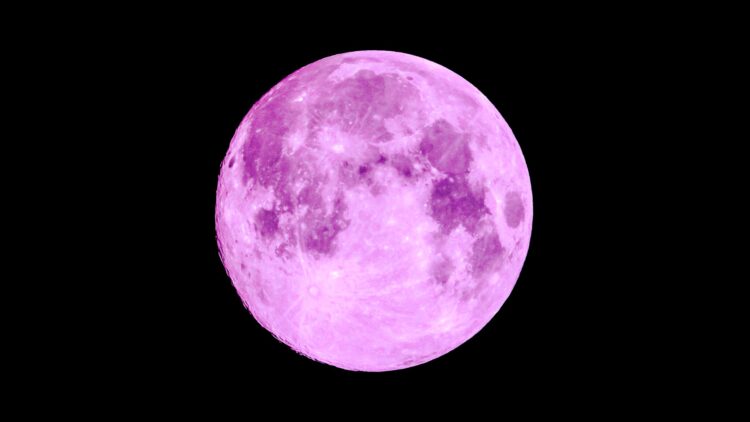We are all familiar with the phases of the Moon, but for those of us who find comfort in looking up into the night sky, we know that there is more to this satellite than just a few shapes throughout the month. The time that is most fascinating to study for those who are interested in studying the sky is the different Full Moons that occur during the year, and there are good news coming soon, the first Full Moon of Spring, known as Pink Moon, will be here at the end of April and it will be spectacular.
The importance of the Pink Moon in April and other full moons throughout the year
The Pink Moon also known as Paschal Moon is the first Full Moon of Spring. There have been other Full Moons before during the winter. The first one happened in January, known as Wolf Moon, Old Moon, Ice Moon or Moon after Yule, and it is representative of both the winter and the new year. Not all Full Moons have a name, but those that do are usually special for one reason or another.
This Pink Moon is particularly special because it has been used for centuries to determine the exact days in which Easter falls. As most of us know, the Catholic church has set dates for most celebrations, but since the bible did not give exact dates on Easter, just a description of it being the first Moon of Spring, it can fall on March or on April (usually between March 22 and April 25) depending on the year and the satellite’s position.
Despite its name, the Moon is not actually pink, this curious and delightful way to call it comes from history, as the Old Farmer’s Almanac explains “The name comes from the early spring bloom of a wildflower native to eastern North America: Phlox subulata, commonly known as creeping phlox or moss phlox. This flower, often called “moss pink,” was in full bloom around April’s Full Moon”.
What this means effectively is that the Pink Moon does not actually change the Moon’s appearance, it will remain as white as always, it is just a name rooted in seasonal traditions rather than science. Among the dozen Full Moons that appear each year, this one is particularly tied to Spring in the northern hemisphere, where it coincides with the blooming of bright pink wildflowers.
Since a Full Moon is not just a one day event (maximum exposure is just one night, but we can see an almost Full Moon that fools the naked eye for a few days) here are the dates to look out for. The Pink Moon will reach peak illumination at 8:22 p.m. on Saturday, April 12, and the Full Moon will happen just before the Moon is farthest from Earth, which will happen on Sunday April 13, 2025, at 6:49 p.m. ET.
Easter Moon key lunar phases April 2025
- First Quarter Moon: April 4, 10:15 p.m. ET
- Full Moon: April 12, 8:22 p.m. ET
- Last Quarter Moon: April 20, 9:35 p.m. ET
- New Moon: April 27, 3:31 p.m. ET
Although you can most likely see the Pink Moon from anywhere, the best places to see it will always be open areas and fields, which allow you to appreciate it in all its glory. The good thing about Full Moons is that they can usually be seen through the clouds, so if you are ready to enjoy it, head out to the countryside and make an evening of it.
As we have mentioned, the Pink Moon is just one of twelve that happen throughout the year, and the next one will also be special, called the Flower Moon, it will peak Monday May 12, 2025 at 12:56 p.m. ET and will be positioned in the constellation Libra.

